Overview
The article centers on the pivotal datasets that drive the success of sales teams, particularly through effective talent movement analysis. It asserts that harnessing AI-driven insights, alongside a thorough examination of talent movement datasets, can substantially enhance recruitment strategies, elevate employee retention, and ultimately propel organizational performance. By leveraging these insights, businesses can not only streamline their hiring processes but also foster a more engaged workforce, leading to improved outcomes across the board.
Introduction
In the fiercely competitive realm of sales, the capacity to adapt and leverage talent movement can distinguish between thriving and merely surviving. Organizations are increasingly recognizing that a deep understanding of talent dynamics—encompassing employee mobility and skills alignment—can significantly enhance recruitment strategies and overall performance.
As companies navigate the intricate landscape of talent datasets, a crucial question emerges: how can sales teams effectively harness these insights to not only attract top candidates but also retain their best talent in an ever-evolving marketplace?
This article delves into eight critical datasets that empower sales teams to optimize their talent management strategies and drive success.
Websets: AI-Driven Insights for Talent Movement Analysis
Websets harnesses advanced to analyze talent movement datasets comparison, providing essential insights into candidate availability and market trends for sales groups. By leveraging Websets' rapid and precise web information retrieval capabilities, users can sift through extensive datasets to pinpoint potential leads and candidates that meet their specific requirements. This approach not only streamlines data discovery but also enhances the hiring process through detailed profiles, ensuring a more efficient and targeted strategy. The platform's unique features for complex queries bolster strategic decision-making for sales teams striving to elevate their performance. Additionally, Websets' API facilitates seamless integration and swift access to crucial information, further supporting hiring initiatives. Case studies exemplify how various groups across industries have effectively employed Websets to enhance their lead generation and recruitment strategies.
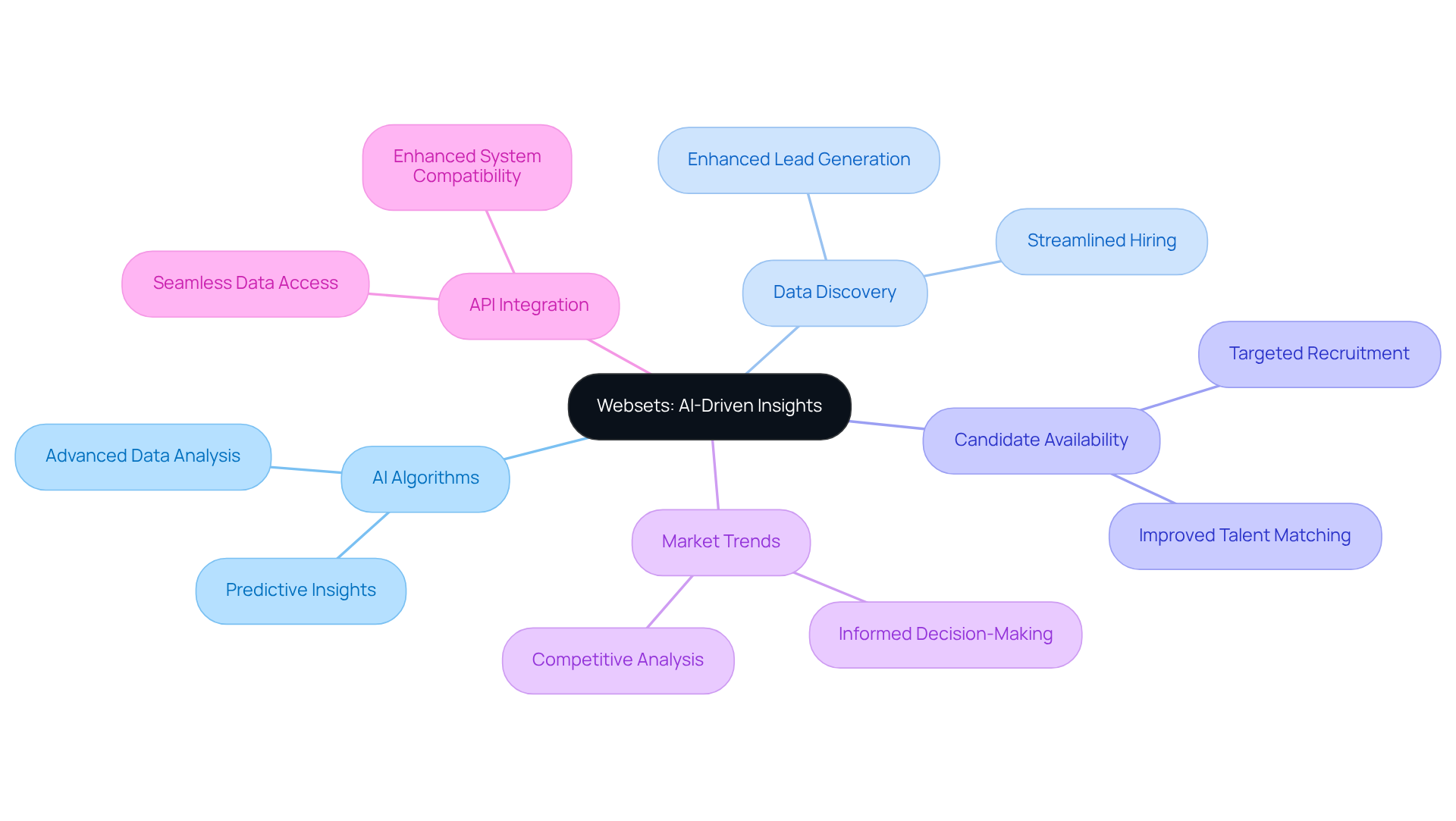
Eightfold.ai: Skills-Based Talent Management Solutions
revolutionizes talent management by prioritizing skills over traditional job titles. Their advanced AI-driven search engine is meticulously designed for complex inquiries, empowering sales teams to identify candidates with the precise skill sets tailored to their unique needs, thereby enhancing the quality of hires.
By harnessing Websets' neural search capabilities, which grasp semantic nuances and entity types, sales organizations can align skills with their organizational demands more efficiently. This integration of AI-driven insights not only cultivates a more capable workforce but also propels revenue growth, positioning Websets as an indispensable asset in the recruitment arena.
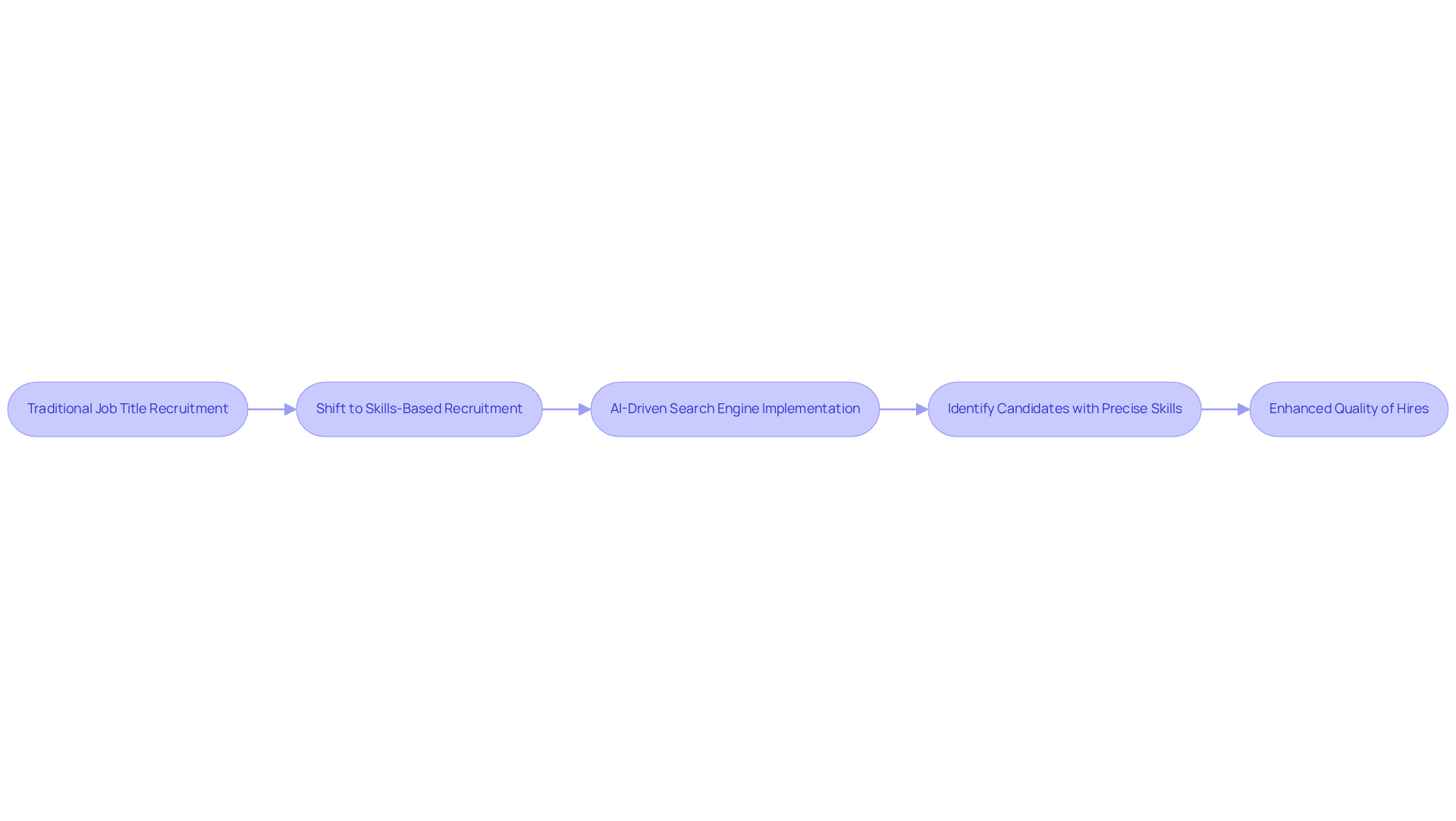
WTW: Comprehensive Talent Flow Analysis for Retention Insights
WTW offers a comprehensive workforce flow analysis that empowers organizations to grasp the complexities of . By utilizing talent movement datasets comparison, sales groups can examine workforce movement trends to pinpoint the root causes of turnover and devise targeted strategies to boost employee satisfaction. This analytical approach is crucial for sustaining a high-performing team, as it not only lowers turnover rates but also significantly reduces recruitment costs.
Companies leveraging insights from talent movement datasets comparison have reported enhanced retention, illustrating the direct connection between effective workforce management and the success of sales groups. As WTW highlights, "Employees who have made an internal move in an organization have a 75% likelihood of staying, compared to 56% for employees who haven’t made an internal move."
Furthermore, with 68.1% of employees more inclined to remain if their employer emphasizes work/life balance, addressing these elements is vital for improving retention. Additionally, recognizing the gap between employer perceptions and employee experiences regarding turnover reasons can offer a more holistic understanding of the issue.
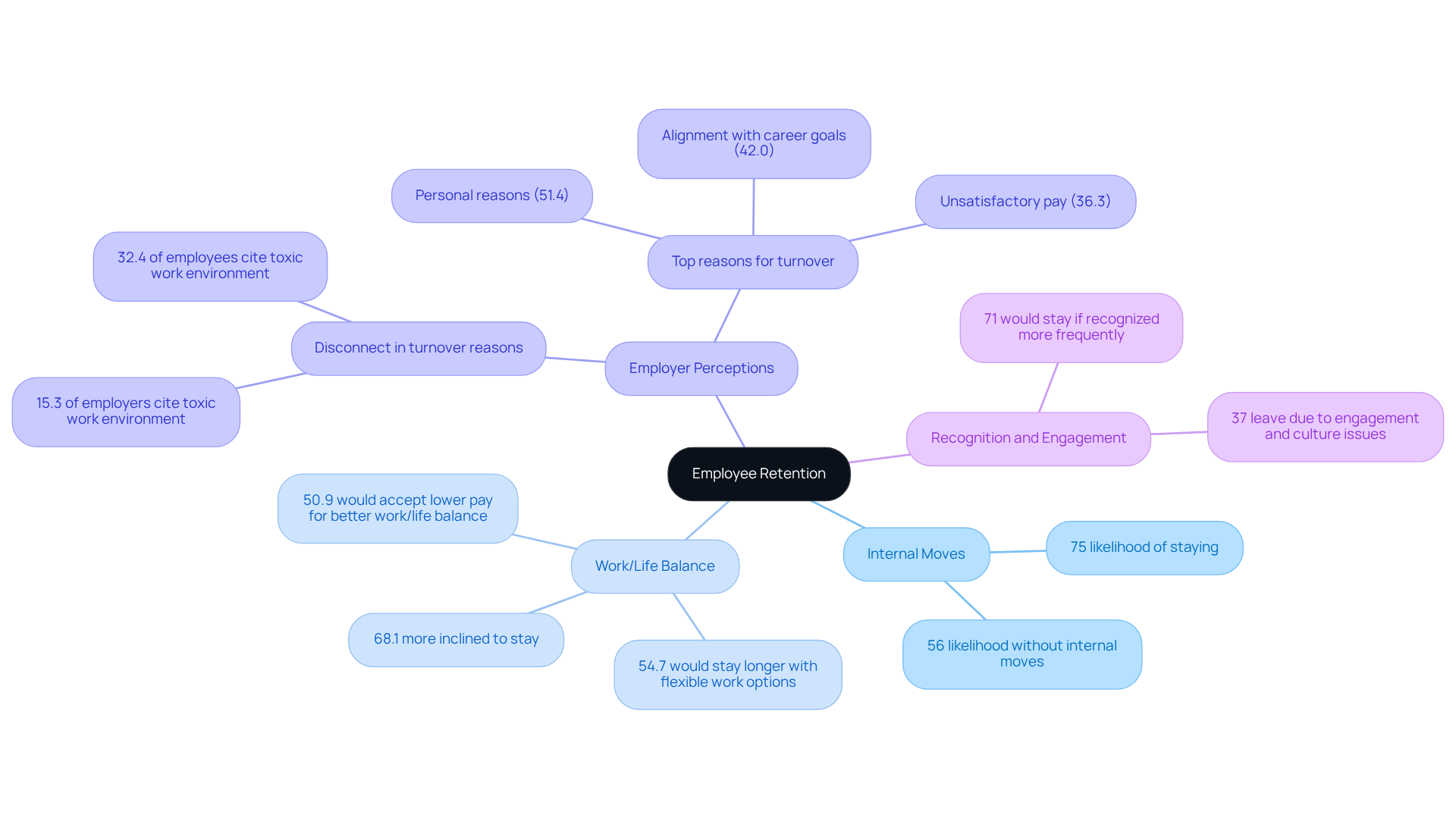
PeopleGoal: Best Talent Management Software for Strategic Implementation
PeopleGoal stands out as a premier human resource management software solution, delivering tools that facilitate the strategic execution of management practices. For marketing teams, this translates to streamlined hiring processes, effective performance monitoring, and robust staff development. By leveraging PeopleGoal, business leaders can ensure their teams are equipped with the right talent to achieve organizational goals. Moreover, when paired with Websets' flexible high-capacity rate limits and exceptional support, hiring initiatives are significantly boosted. Websets guarantees , empowering sales teams to adapt to evolving demands while harnessing PeopleGoal's powerful analytics and tracking capabilities.
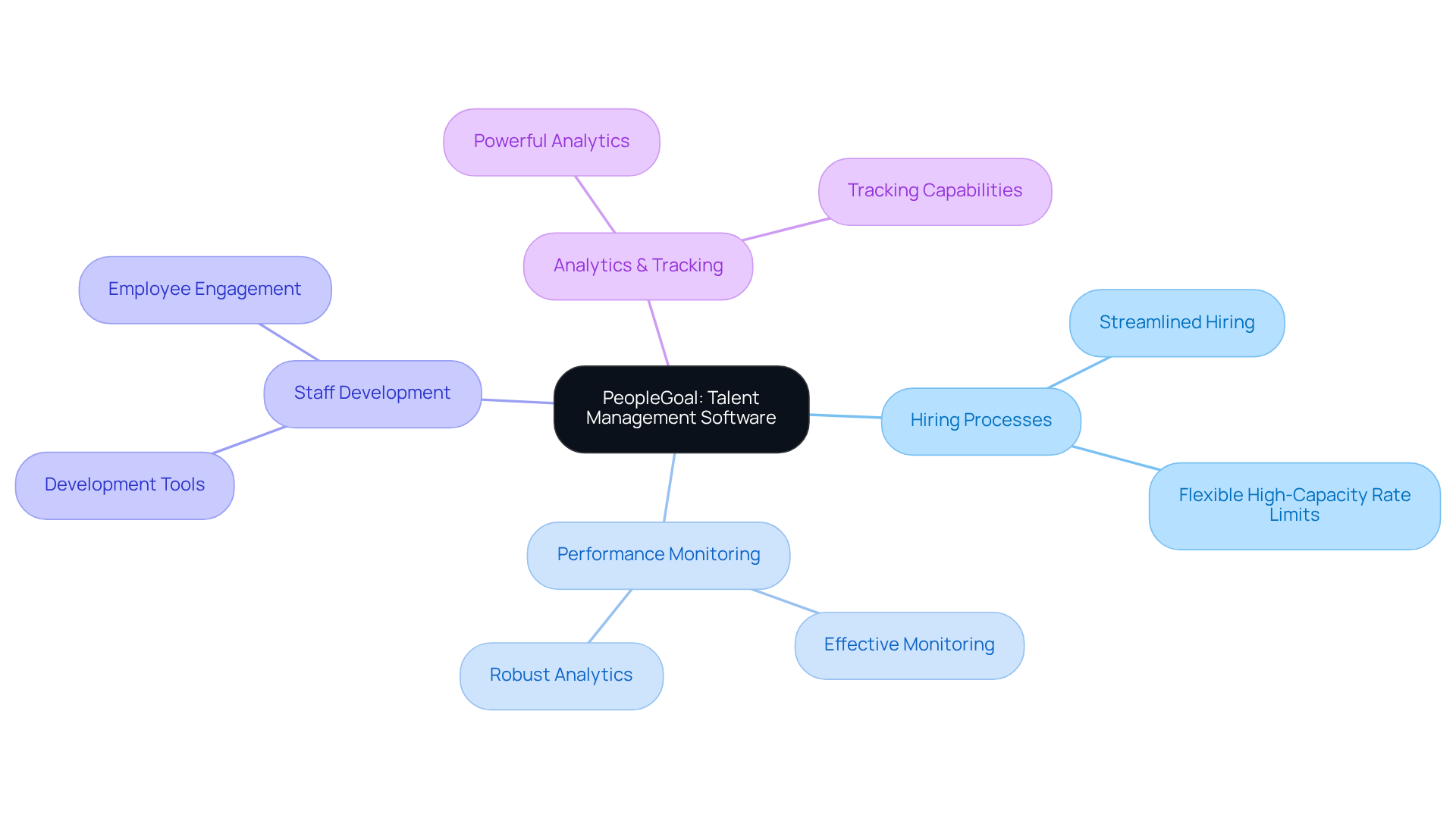
Data-Driven Recruitment Strategies from Talent Movement Insights
Data-informed hiring approaches empower business groups to effectively leverage insights from the comparison of talent movement datasets. By analyzing trends and patterns, organizations can identify the most effective channels for sourcing candidates and pinpoint in-demand skills. This strategic method not only enhances the quality of hires but also accelerates the hiring process, allowing sales teams to swiftly adapt to market changes.
Companies employing predictive analytics have reported notable improvements in hiring metrics, including reduced time-to-fill and increased offer acceptance rates. Moreover, organizations that conduct a talent movement datasets comparison gain a deeper understanding of demographic shifts and candidate preferences, which leads to more targeted recruitment efforts.
With 82% of companies recognizing , leveraging these datasets is essential for maintaining a competitive edge in talent acquisition.
Case studies demonstrate how Websets' AI-driven candidate discovery and qualification tools enable organizations to efficiently sift through candidates based on skills, experience, and location, ensuring that sales groups find the ideal match for their open roles.
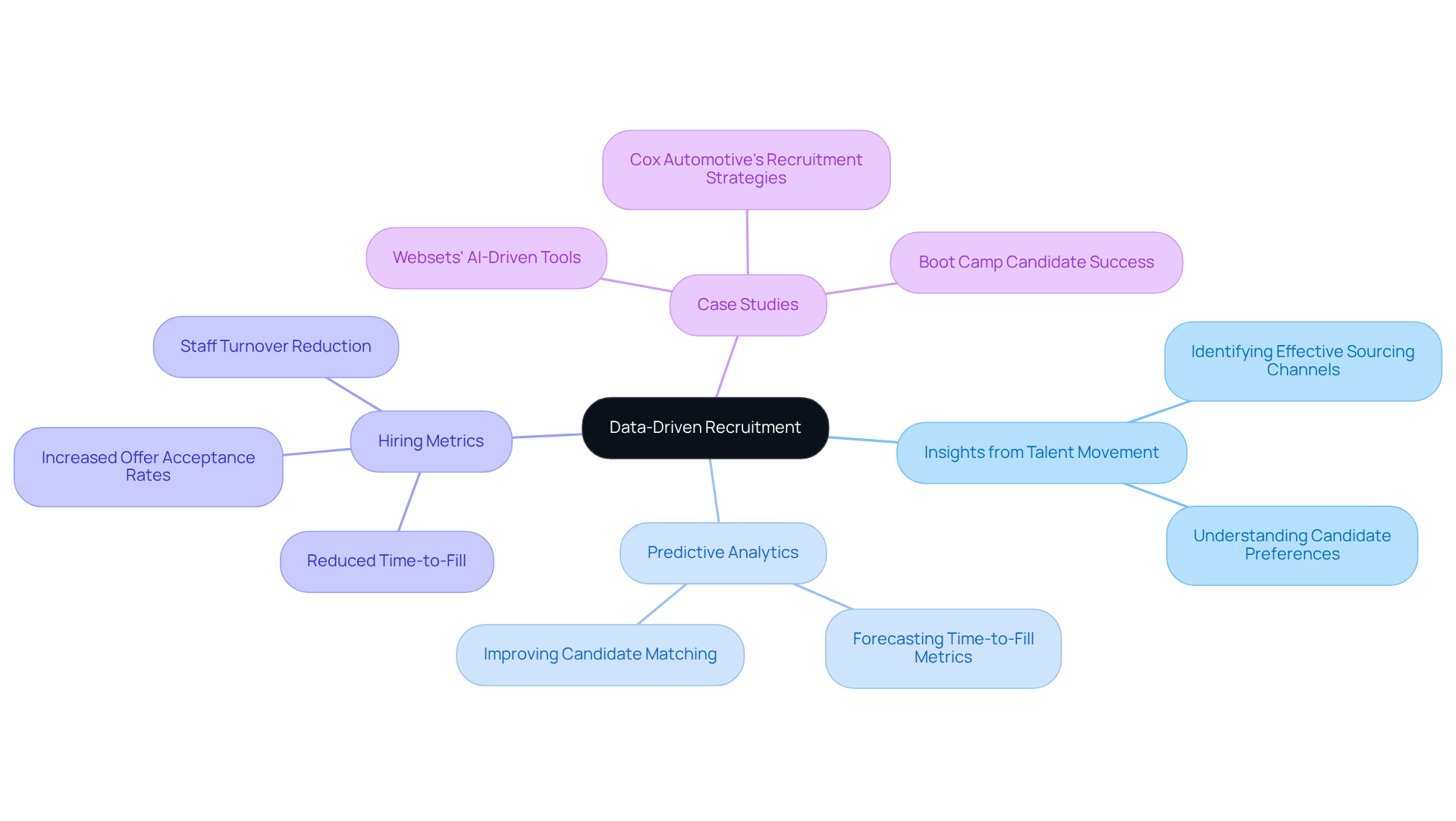
Impact of Talent Mobility on Organizational Performance
Talent mobility is essential for driving organizational performance, particularly in commercial environments. When employees transition within the organization, it cultivates greater engagement and retention—critical elements for enhancing productivity. For marketing teams, nurturing a culture of mobility not only bolsters adaptability among members but also equips them with a diverse skill set applicable across various roles. This adaptability ultimately leads to improved revenue effectiveness and a more agile workforce.
Recent research reveals that organizations emphasizing employee mobility witness elevated levels of engagement, which directly correlates with productivity gains. Companies that actively endorse internal mobility report significant increases in employee satisfaction and retention rates. This is particularly relevant for sales teams, where the ability to shift roles and responsibilities can inspire innovative methods and strategies that enhance performance.
Moreover, fostering a culture of mobility within commercial organizations yields substantial benefits, including enhanced collaboration, knowledge sharing, and a more agile response to market dynamics. By empowering employees to explore diverse roles, organizations can cultivate a more resilient sales force adept at navigating challenges and seizing opportunities effectively.
As Dr. Tobias Preising, Global Mobility Services Partner at KPMG, asserts, "To improve the social value of Talent Mobility, accountable groups should promote diversity, inclusion, and social Mobility in the mobile workforce." This viewpoint underscores the importance of aligning workforce mobility with broader organizational strategies, including ESG initiatives, ensuring compliance with labor standards and supporting employee well-being. Furthermore, transparency in data collection by Global Mobility teams is vital for meeting workforce-related reporting obligations, thereby enhancing the overall impact of employee mobility on organizational performance.
To foster a culture of mobility, sales leaders can implement actionable strategies such as:
- Encouraging cross-departmental projects
- Providing mentorship opportunities
- Recognizing individuals who embrace new roles
These initiatives not only facilitate internal mobility but also contribute to a more engaged and productive workforce.
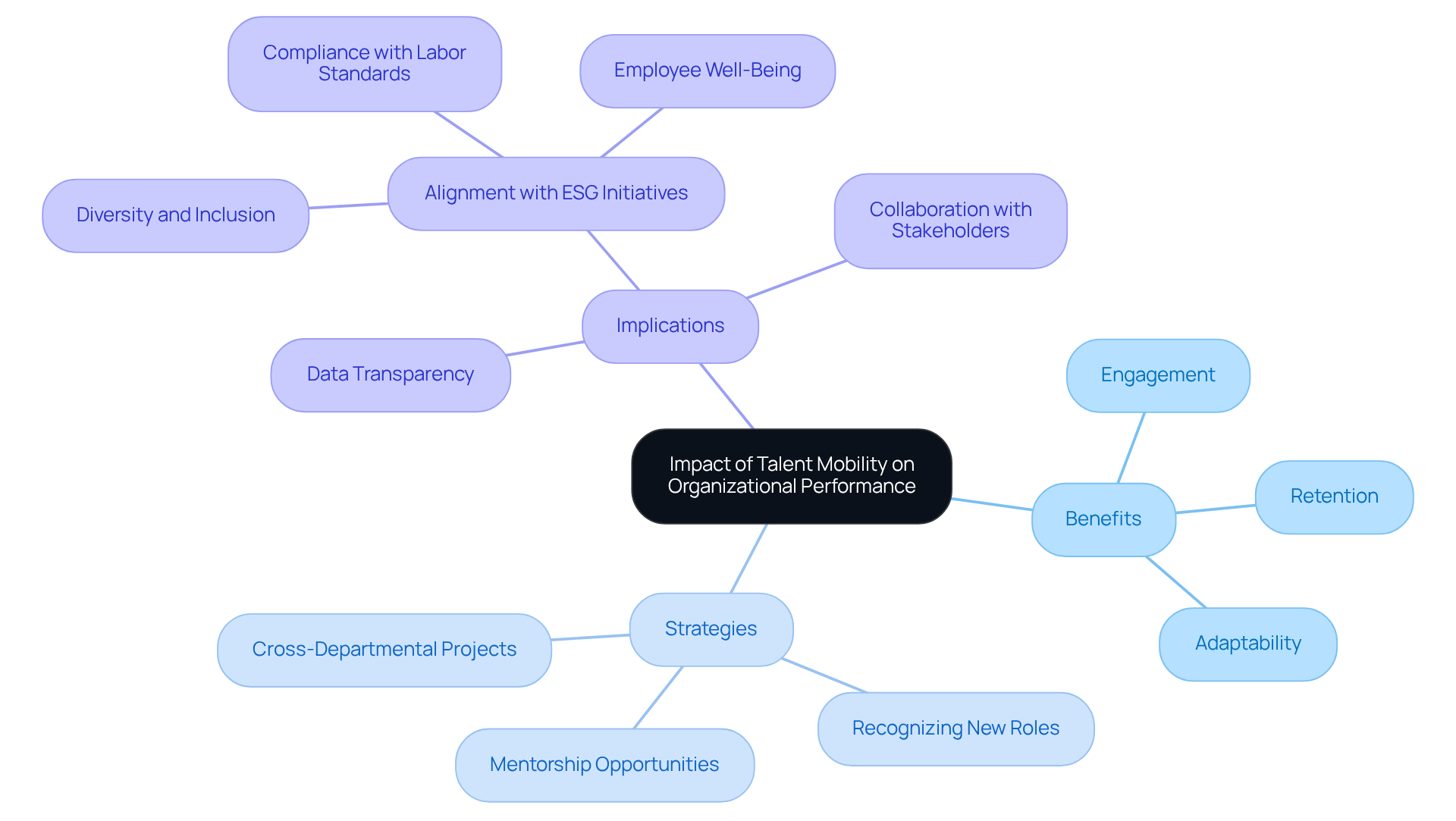
Key Metrics for Benchmarking Talent Movement Performance
To effectively benchmark talent movement performance, sales groups must focus on talent movement datasets comparison by prioritizing key metrics such as:
Consider this: the average turnover rate in sales groups can soar to 20%, which significantly impacts organizational performance and expenses. The Society for Human Resource Management (SHRM) reports that the in the U.S. stands at 42 days, yet top-performing companies manage to reduce this to under 30 days. By meticulously tracking these metrics, groups can assess the efficiency of their recruitment strategies and make informed, data-driven modifications to enhance results using talent movement datasets comparison.
Organizations that utilize a talent movement datasets comparison alongside turnover rates and engagement scores have reported improved retention and productivity, underscoring the value of a proactive approach. As Josh Bersin aptly notes, "Employee engagement metrics are crucial for understanding the pulse of your organization."
By concentrating on these essential metrics, sales groups can sustain a competitive advantage in attracting and retaining top talent, as evidenced by talent movement datasets comparison, ultimately driving success in their operations. Consistently analyzing turnover and engagement metrics empowers groups to pinpoint areas for enhancement and apply effective strategies.
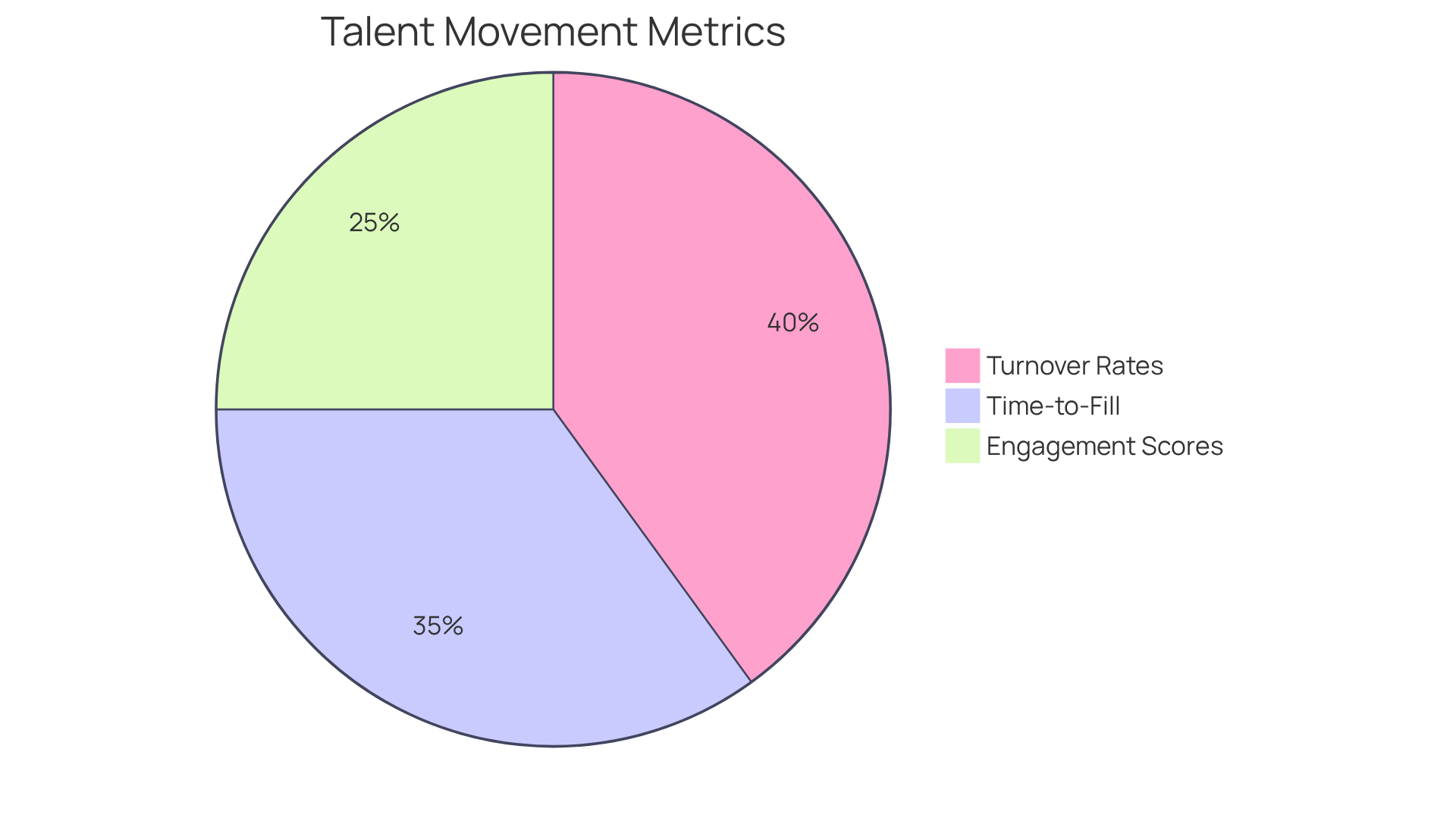
Leveraging AI for Enhanced Talent Analysis and Decision-Making
Utilizing AI for talent assessment empowers sales groups to uncover profound insights into candidate profiles and current market trends. Websets' advanced , featuring the Fast API and Research Agentic API, is meticulously crafted to navigate extensive datasets, revealing patterns and correlations that may elude human recruiters. By integrating Websets' AI solutions into their hiring strategies, sales groups can significantly enhance their decision-making processes, ensuring they select candidates who not only possess the required qualifications but also align well with the organizational culture. Recent advancements in AI have introduced sophisticated candidate profiling techniques, facilitating a more nuanced understanding of potential hires. Organizations that have embraced these AI-driven methodologies, including those utilizing Websets, report improved efficiency and accuracy in their hiring efforts, ultimately leading to enhanced team dynamics and performance.
As companies adopt AI technologies, establishing trust in these systems becomes paramount. Users are unlikely to embrace technology they cannot rely on. As one industry leader aptly noted, "Artificial intelligence and generative AI are considered the most important technology of any lifetime, revolutionizing business and customer experiences."
For instance, companies utilizing Websets have adeptly integrated AI tools into their hiring processes, resulting in a 30% improvement in candidate quality and a 25% reduction in time-to-hire. By prioritizing customer needs and ensuring responsible AI development, businesses can harness these technologies to refine their hiring strategies. Websets also emphasizes security and compliance, offering SOC2 certification and enterprise data processing agreements, which further reinforce trust in its solutions.
To maximize the benefits of AI in recruitment, sales groups should concentrate on:
- Cultivating trust with their AI systems
- Continuously assessing their effectiveness
- Remaining informed about the latest advancements in AI tools
This approach not only enhances decision-making but also nurtures a culture of innovation within the organization.
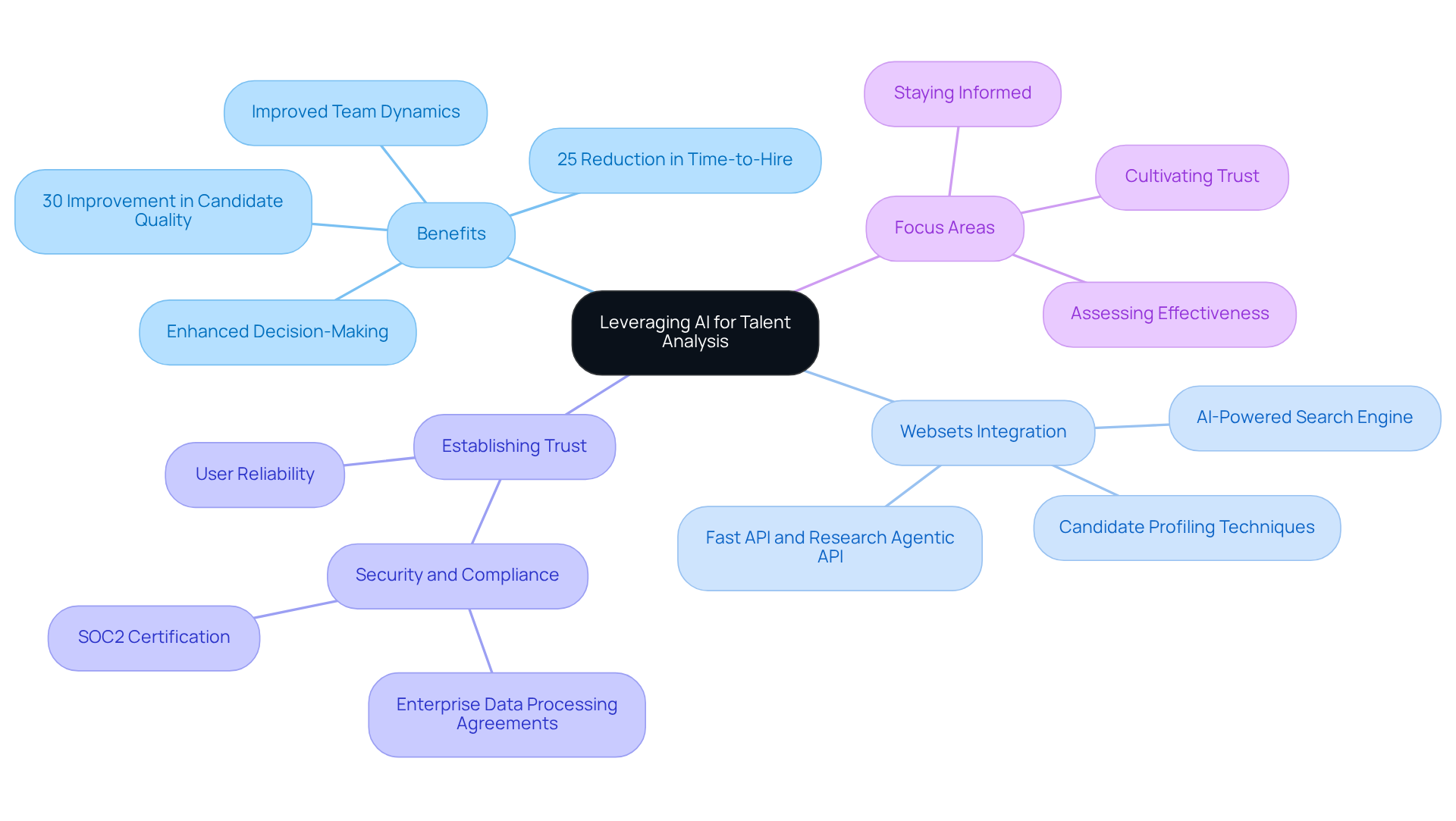
Leadership's Role in Managing Talent Movement
Leadership is essential in managing personnel movement, as it creates an environment that fosters growth and mobility. Sales leaders must actively promote internal opportunities and provide robust support for employees seeking new roles within the organization. This approach not only but also retains valuable individuals who significantly contribute to the group's success. By prioritizing these initiatives, organizations can cultivate a culture of advancement, driving both individual and collective achievement.
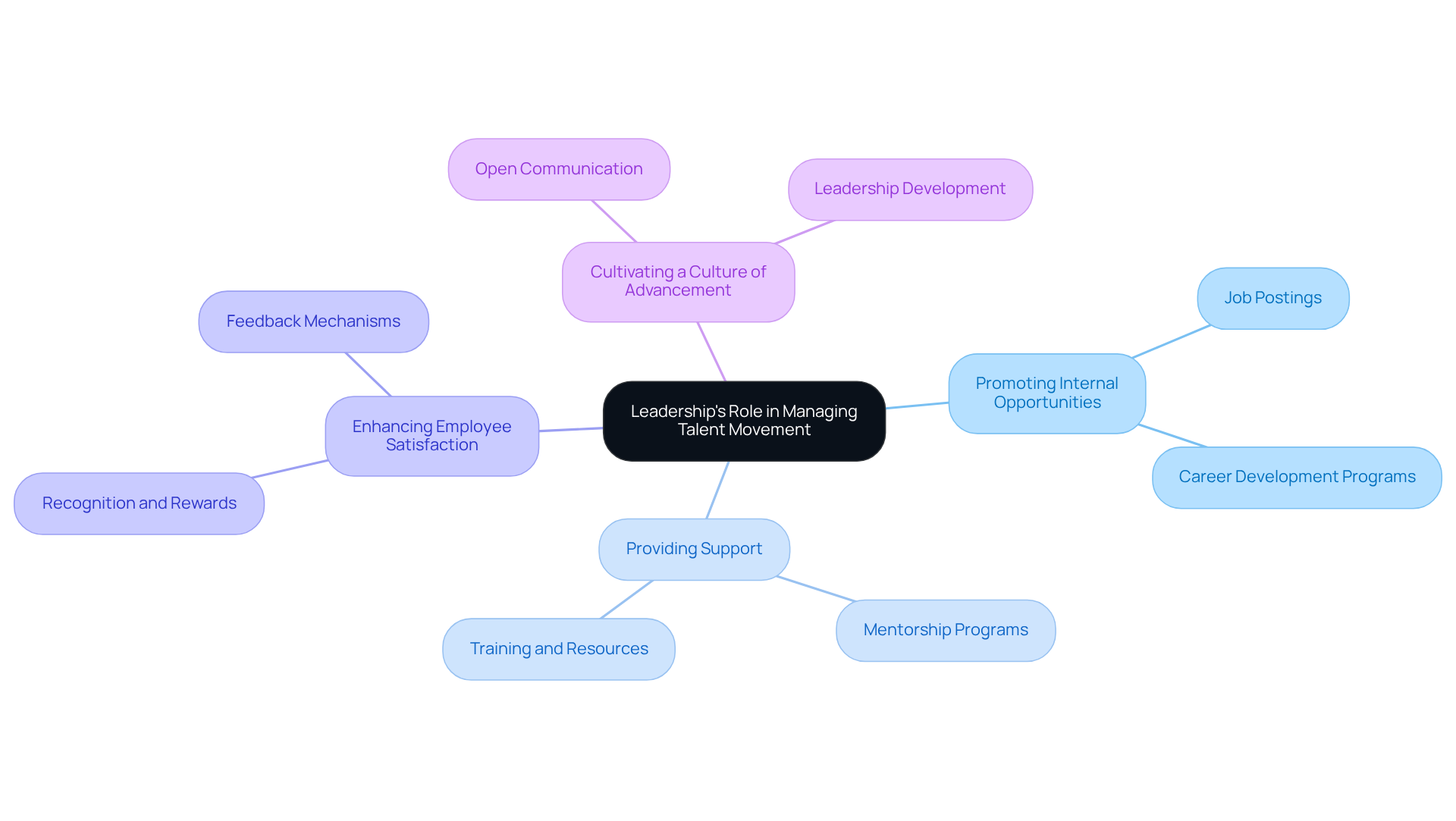
Future Trends in Talent Movement Datasets and Workforce Planning
The evolving landscape of personnel mobility necessitates that sales groups remain vigilant to emerging trends in talent movement datasets comparison and workforce strategy. Predictive analytics and machine learning are at the forefront of this transformation, fundamentally altering how organizations manage personnel. By leveraging these advanced technologies, sales teams can refine their hiring strategies, enabling them to identify and attract top talent with greater efficiency.
For example, organizations such as IBM have adeptly incorporated predictive analytics into their workforce planning, allowing them to foresee skill gaps and tailor their hiring processes to meet future market demands. This proactive approach not only enhances but also ensures that sales teams possess the requisite skills to thrive in a competitive environment.
Furthermore, the influence of predictive analytics transcends recruitment; it is pivotal in workforce planning as well. By analyzing historical data and trends, including talent movement datasets comparison, leaders can make informed decisions regarding resource allocation and team structure, ultimately driving improved performance outcomes. As emphasized by industry experts, the capacity to anticipate workforce needs is crucial for sustaining a competitive advantage in today's fast-paced market.
Additionally, emerging technologies are revolutionizing workforce planning strategies. Innovations like AI-driven talent management systems empower organizations to streamline their hiring processes and enhance candidate matching. These advancements not only boost operational efficiency but also foster a more agile and responsive workforce.
In conclusion, embracing predictive analytics and cutting-edge technologies is essential for sales teams seeking to optimize their recruitment strategies and workforce planning. By proactively engaging with these trends, organizations can ensure they are well-equipped to navigate the challenges of a dynamic market.
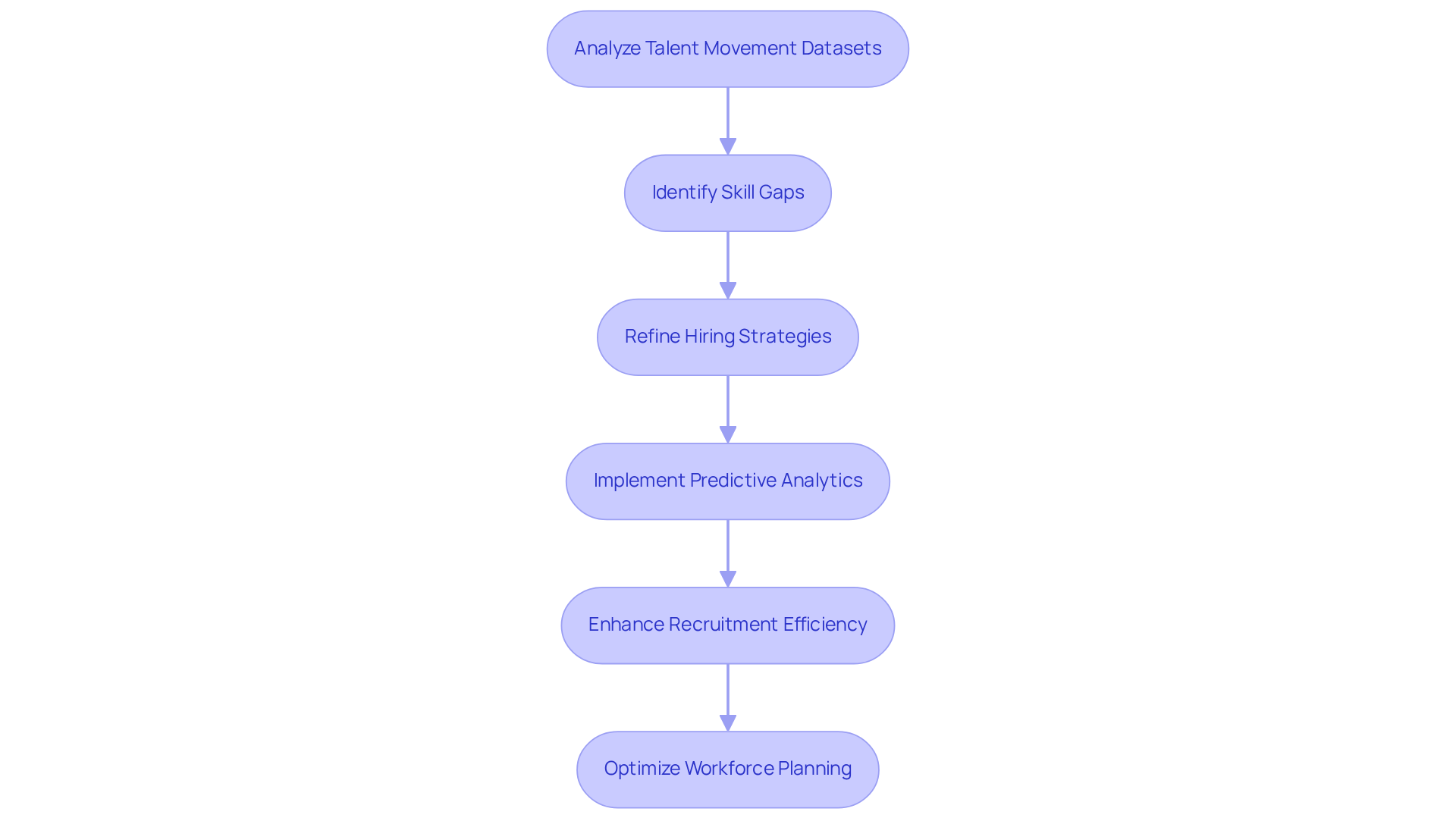
Conclusion
The significance of talent movement datasets in driving sales team success is paramount. By effectively analyzing and leveraging these datasets, organizations can enhance their recruitment strategies, improve employee retention, and ultimately boost performance. The integration of AI tools and predictive analytics empowers sales teams to make informed hiring decisions, aligning talent acquisition with organizational goals.
Key insights throughout the article highlight how platforms like Websets and Eightfold.ai revolutionize talent management by prioritizing skills and utilizing data-driven approaches. WTW's comprehensive analysis of talent flow offers invaluable retention insights, while PeopleGoal streamlines the hiring process and supports strategic implementation. Furthermore, the importance of leadership in fostering a culture of mobility and proactive engagement with emerging trends in talent movement emerges as essential components for sustained success.
In a competitive landscape, organizations must prioritize the strategic use of talent movement datasets and AI technologies to refine their hiring practices and workforce planning. By embracing these advancements, sales teams can adapt to changing market demands and cultivate a more agile and effective workforce. The call to action is clear: invest in the right tools and strategies today to secure a thriving sales organization for tomorrow.
Frequently Asked Questions
What is Websets and how does it assist in talent movement analysis?
Websets is a platform that utilizes advanced AI algorithms to analyze talent movement datasets, providing insights into candidate availability and market trends for sales groups. It helps users sift through extensive datasets to identify potential leads and candidates that meet specific requirements, streamlining data discovery and enhancing the hiring process.
How does Websets improve the hiring process?
Websets enhances the hiring process by providing detailed profiles of candidates, allowing for a more efficient and targeted recruitment strategy. Its unique features for complex queries support strategic decision-making for sales teams.
What role does Websets' API play in talent management?
Websets' API facilitates seamless integration and quick access to crucial information, further supporting hiring initiatives by allowing users to retrieve important data swiftly.
What is the focus of Eightfold.ai in talent management?
Eightfold.ai focuses on skills-based talent management solutions, prioritizing skills over traditional job titles to enhance the quality of hires. Its AI-driven search engine is designed for complex inquiries, helping sales teams identify candidates with specific skill sets.
How does Eightfold.ai's neural search capability benefit organizations?
Eightfold.ai's neural search capabilities allow sales organizations to understand semantic nuances and entity types, enabling them to align skills with their organizational needs more efficiently, which cultivates a more capable workforce and drives revenue growth.
What insights does WTW provide regarding employee retention?
WTW offers a comprehensive analysis of workforce flow, helping organizations understand employee retention complexities. By examining talent movement trends, companies can identify turnover causes and develop targeted strategies to enhance employee satisfaction.
What is the impact of internal moves on employee retention according to WTW?
According to WTW, employees who have made an internal move within an organization have a 75% likelihood of staying, compared to 56% for those who haven’t made such a move.
What factors influence employee retention as highlighted by WTW?
WTW highlights that 68.1% of employees are more likely to remain with an employer that emphasizes work/life balance. Addressing this aspect, along with understanding the gap between employer perceptions and employee experiences regarding turnover, is crucial for improving retention.




